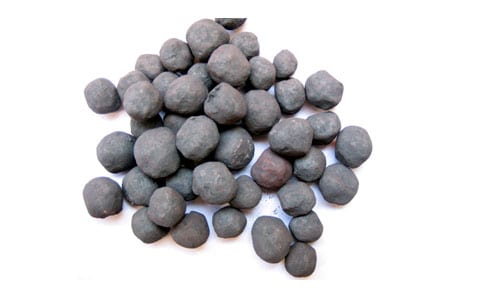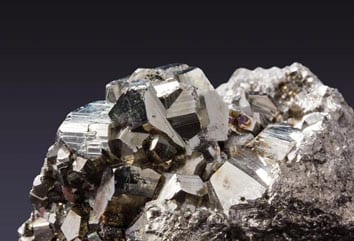Tīpakohia Reo:
Rino ore Ko te wha te tuhaa tino noa i roto i te kirinuku o te whenua. Ko te faufaa ki te maitai ahumahi, me te reira i te rauemi faufaa mō te ao te whanaketanga ōhanga Iron. Te rino no hoki whānui whakamahia i roto i te hanga, me te ahumahi o waka. Te nuinga o ngā rauemi ore rino e tito o metamorphosed ngā rino ka maka oati (Bif) i roto i nei kei te kitea te rino i roto i te puka o waikura, waihā me ki te whānuitanga iti pākawa waro.
Ko te hanganga matū o tokahuke rino kua he whānui ngā tūmomo kitea i roto i te hanganga matū rawa hoki Fe ihirangi me ngā kohuke gangue e pā ana. kohuke rino Major e pā ana ki te nuinga o nga tokahuke rino he hematite, goethite, limonite me magnetite. Ko te täoke matua i roto i te tokahuke rino e SiO2 me Al2O3. Ko te takawai me te alumina whanau angamaheni kohuke hakari i roto i tokahuke rino he kiripaka, kaolinite, gibbsite, diaspore me corundum. Of these it is often observed that quartz is the main silica bearing mineral and kaolinite and gibbsite are the two-main alumina bearing minerals.


Kei te nuinga whakamana rino ore tango i roto i tuwhera poka mahi keri, hua i roto i tailings nui whakatupuranga. te tikanga whai wāhi te pūnaha rino ore whakaputa e toru ngā wāhanga: keri, ngā mahi tukatuka me te pelletizing. o enei, Mā tukatuka e tutuki te kōeke rino tika me te matū te mua ki te atamira pelletizing. Tukatuka ngā kuru, whakarōpū, milling, and concentration aiming at increasing the iron content while reducing the amount of gangue minerals. He ona ake āhuatanga ahurei ia tāpui kohuke ki te faatura ki te rino, me te gangue amo kohuke, a reira e titau te reira i te tikanga kukū rerekē.
Magnetic separation is typically used in high-grade iron ore beneficiation where the dominant iron minerals are ferro and paramagnetic. Wet me maroke iti-kaha wehenga autō (LIMS) E whakamahia tūāhua ki te tukatuka tokahuke ki ngā āhuatanga autō kaha pērā i magnetite i whakamahia mākū nui-kaha wehenga autō te ki wehe i te kohuke Fe-amo ki ngoikore āhuatanga autō pērā i hematite i kohuke gangue. tokahuke rino taua goethite me limonite e nuitia kitea i roto i tailings me e kore e wehe rawa te pai e rānei tikanga.

whakamahia tēnei waka te ki te whakaiti i te ihirangi o poke i roto i te tokahuke rino iti-kōeke. Ka taea te hāngai tokahuke rino rānei i hāngai tēnei waka anionic o waikura rino ranei whakataka tēnei waka cationic o takawai, Heoi whakataka tonu tēnei waka cationic te ara tēnei waka tino rongonui whakamahia i roto i te ahumahi rino. Ko te whakamahi o te tēnei waka ona iti e te utu o tauhohenga, te aroaro o te silica, me te alumina-taonga häware me te aroaro o kohuke pākawa waro. ano, titau tēnei waka ururua maimoatanga wai me te whakamahi o te dewatering awa mō tono whakamutunga maroke.
Ko te whakamahi o tēnei waka mo te kukū o te rino tā hoki desliming rite tere i roto i te aroaro o whaina hua i roto i te tōtika heke me ngā utu kaiwhakahohe teitei. Ko te tino nui mo te tango o alumina rite te wehenga o te gibbsite i hematite goethite ranei e tetahi āpiha mata-kaha Desliming Ko te tino uaua. Te nuinga o ngā kohuke whanau alumina puta i roto i te awhe rahi kaitahi (<20um) allowing for its removal through desliming. whānui, a high concentration of fines (<20um) and alumina increases the required cationic collector dose and decreases selectivity dramatically. Therefore desliming increases flotation efficiency, but results in a large volume of tailings and in loss of iron to the tailings stream.
Dry processing of iron ore presents an opportunity to eliminate costs and wet tailings generation associated with flotation and wet magnetic separation circuits. STET has evaluated several iron ore tailings and run of mine ore samples at bench scale (pre-feasibility scale). Significant movement of iron and silicates was observed, with examples highlighted in the table below.

Ko nga hua o tenei ako faaite taea te ake e iti-kōeke rino whaina ore i te tikanga o te whakawehe whitiki STET tribo-hiko. Based on STET experience, te whakaora hua kōeke me / ranei tino e whakapai ake i te tukatuka tauine pairati, he mea whakarite ki te pūrere whakamātau pae-tauine whakamahia i roto i enei mau tamataraa rino ore.
The STET dry electrostatic fine iron ore separation process offers many advantages over traditional wet processing methods, such as magnetics or flotation, tae atu:
Contact us to learn more about dry processing of iron ore.
Tohutoro: